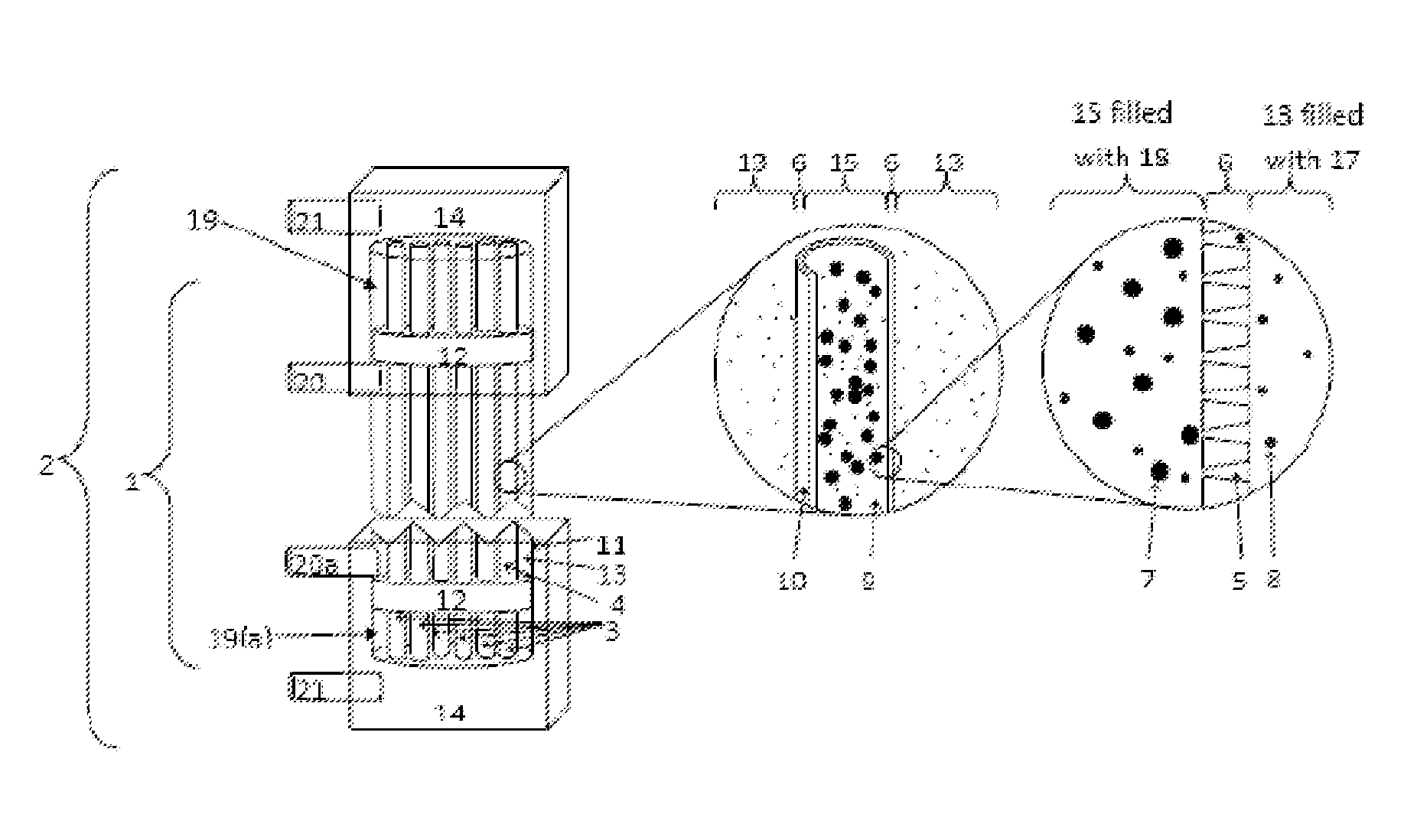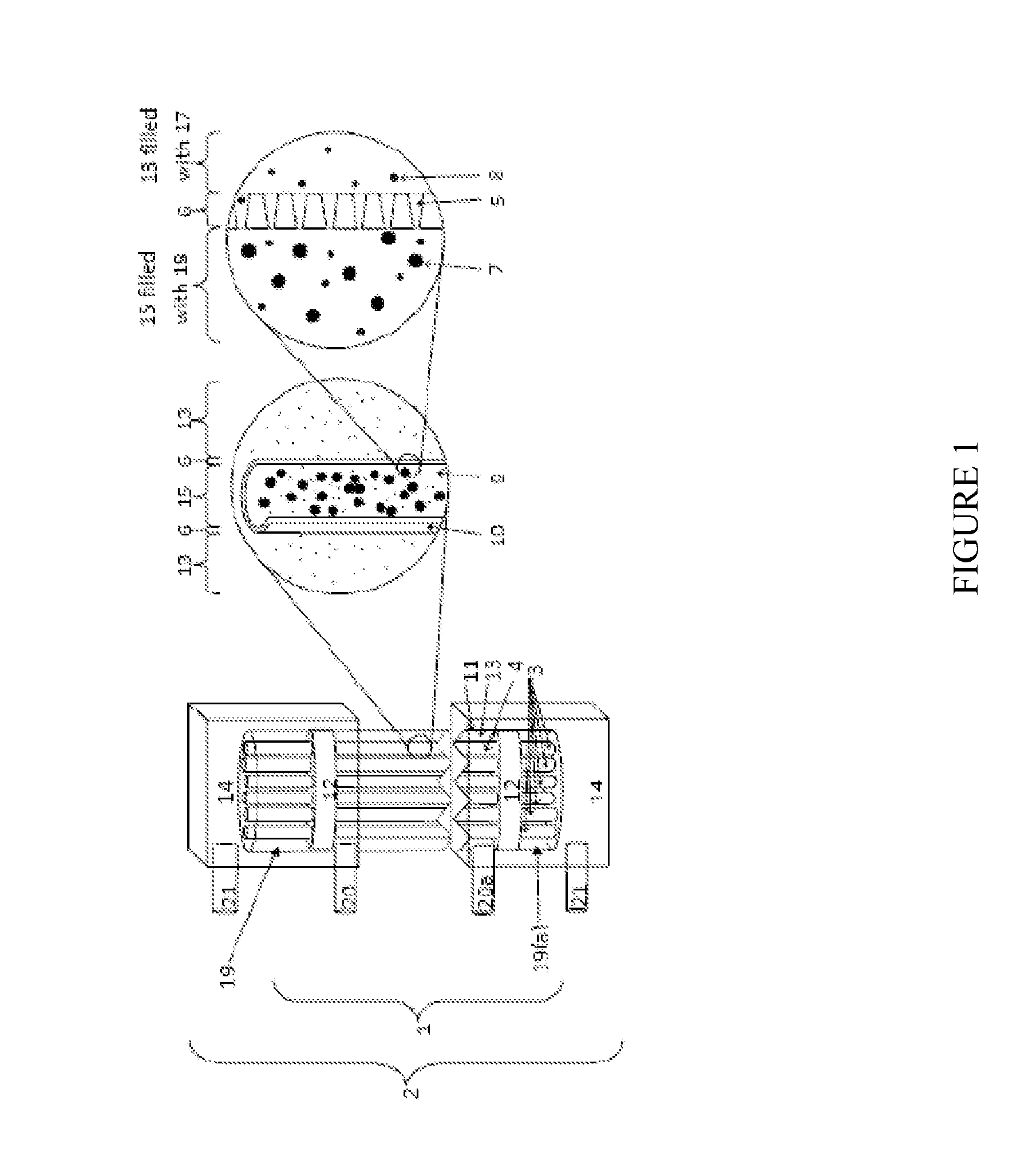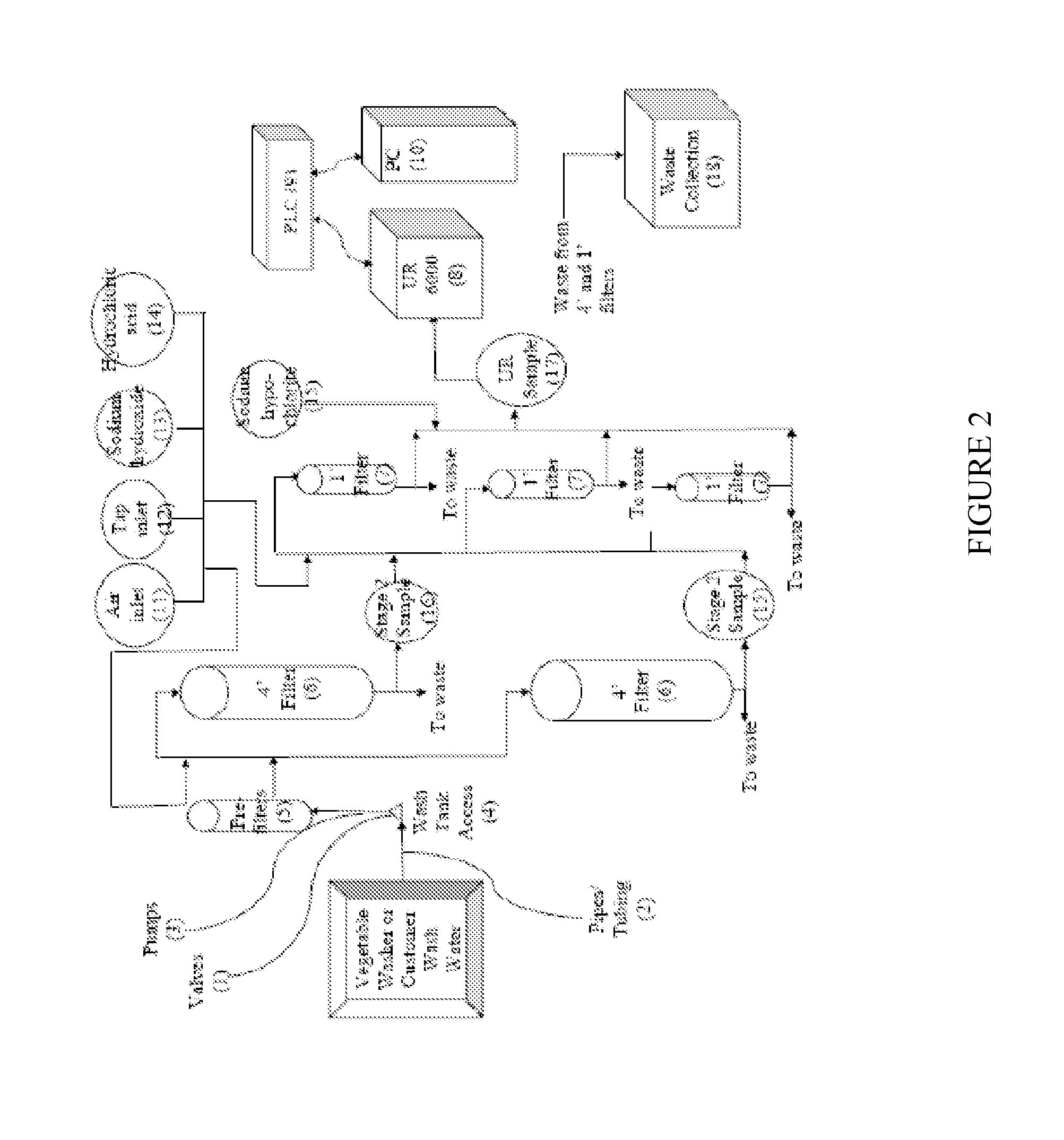Analyte screening and detection systems and methods
a technology of detection system and analyte, applied in the field of analyte screening and detection system and methods, can solve the problems of time-consuming and skill-intensive pre-enrichment step which is performed on a specimen to increase the number of pathogenic organisms present, and is difficult to detect in large volumes of liquid sample material
- Summary
- Abstract
- Description
- Claims
- Application Information
AI Technical Summary
Benefits of technology
Problems solved by technology
Method used
Image
Examples
example 1
[0064]Valves, tubes and pumps form connections between a wash tank access fitting, filters, and an air port. Valves and pumps are controlled by computer using a computer program. The computer program interface uses a National Instruments LabWindows platform as the base graphical user interface.
[0065]For a produce screening application, wash water samples are supplied to an OmniFresh 1000™ Vegetable Wash Screening System from a vegetable wash tank. Wash water from the wash tank (the raw sample) is introduced into the system by pumping it through a set of pre-filters to remove large particulates. The pre-filtered sample (pre-filtered raw sample) is pumped through valves and tubing leading to a first stage ultrafilter which is a 4′ ultrafilter, X-Flow model type S-30 FSFC PSU. The membrane diameter is 0.8 mm, the membrane area is 6.2 m2, the length is 1047 mm, and the pore is 25-35 nm Sample wash water is continuously pumped through the pre-filter and ultrafilter at a constant rate whi...
example 2
[0075]To allow for continuously sampling of produce, a system parallel to the one previously described in Example 1 is provided as a shown in Figure @@@. Included are one additional first stage 4′ ultrafilter for a total of two first stage 4′ ultrafilters which each run in parallel with each other, and two additional second stage 1′ ultrafilters for a total of three second stage 1′ ultrafilters which each run in parallel with each other. In addition, all the necessary pumps, valves, tubing, and connections necessary to move the liquid sample through the system are provided as are the components needed for cleaning cycles. The controls are designed to allow for multiple processes to occur simultaneously. For example, after the wash water from a lot of produce was been sampled through one of 4′ ultrafilters, sampling immediately begins on the next lot of produce using the second available 4′ ultrafilter. This allows time for the first ultrafilter to be cleaned and regenerated without ...
example 3
[0076]The components used in Examples 1 and 2 are provided and function as follows:
[0077]1. Valves—The one-way directional valves are controlled by the computer program. The valves are used throughout the system.
[0078]2. Tubing / piping—The tubing / piping connects the valves, pumps, tanks, and filters, allowing the wash water to flow through the system.
[0079]3. Pumps—The diaphragm pumps move liquid by filling a chamber then expelling its contents. The fluid never comes into contact with the mechanical parts of the pump, only the fill chambers. The pumps are turned on and off by the program, and their operation may be controlled by the valves in the same line. The valves maintain pressure in the system when they are closed, and the pump does not force liquid through the valves. When the valves are open, liquid is free to move through the tubing / piping and the pump runs to move as much liquid as possible through the system.
[0080]4. Connection to access wash tank—This is a simple threaded...
PUM
| Property | Measurement | Unit |
|---|---|---|
| pore size | aaaaa | aaaaa |
| pore size | aaaaa | aaaaa |
| size | aaaaa | aaaaa |
Abstract
Description
Claims
Application Information
 Login to View More
Login to View More - R&D
- Intellectual Property
- Life Sciences
- Materials
- Tech Scout
- Unparalleled Data Quality
- Higher Quality Content
- 60% Fewer Hallucinations
Browse by: Latest US Patents, China's latest patents, Technical Efficacy Thesaurus, Application Domain, Technology Topic, Popular Technical Reports.
© 2025 PatSnap. All rights reserved.Legal|Privacy policy|Modern Slavery Act Transparency Statement|Sitemap|About US| Contact US: help@patsnap.com



